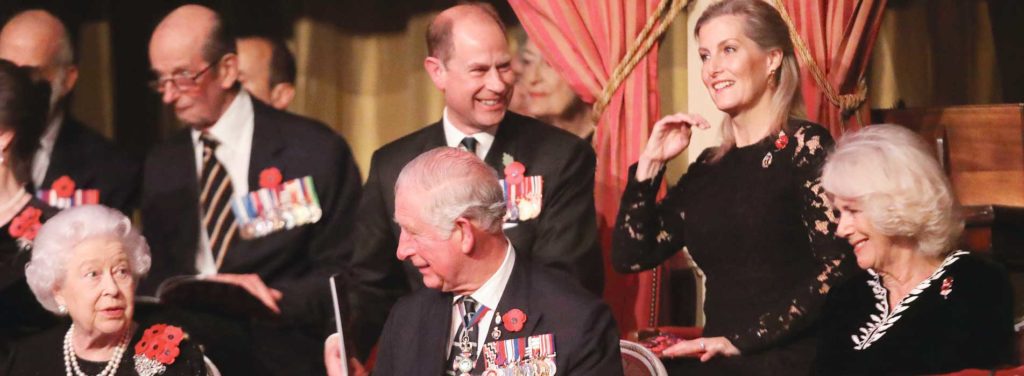The birth of Prince Harry and Meghan Markle’s first child raises a question that used to be asked more regularly in the 20th century than in the 21st: what’s the point of hereditary monarchies and extended royal families?
They enshrine exclusivism and elitism. There are only two ways to join the club-by birth or through marriage. Merit has no place in a system that operates on the principle of inheritance. So, why do 44 countries, 16 of which are realms of the British Queen, still have a monarch as head of state?
For display purposes seems the obvious answer.
The British royal family is on constant display. That’s a fact, starting with the Queen, through to Princes Charles, William and Harry, their respective wives-Camilla, Kate and Meghan -and even down to the relatively inconsequential Sophie, wife of Prince Edward. Britain’s Windsors jointly undertake 2,000 public engagements every year, entertain 70,000 guests, answer 100,000 letters and serve as patrons of 3,000 charitable organisations. It is a formidable public branding exercise to no particular purpose except to feed the mindless stream of news-filler stories, social media posts and the general consciousness.
Branding is also key for Thailand’s monarchy, as shown by the May 4 coronation of Maha Vajiralongkorn, 10th king of the Chakri dynasty. Thailand ended absolute rule for its kings in 1932 but still regards them as almost divine. Accordingly, even so eccentric a figure as the new King Rama X- he promoted his pet poodle Fufu to the rank of air chief marshal- is now officially transformed into a revered, deity-like figure.
And the imperial brand was revivified in Japan, home of the world’s oldest monarchy, when Crown Prince Naruhito took over from his abdicating father on May 1 to become the country’s 126th emperor. In post-World War II Japan, the emperor is no longer constitutionally seen as a living god. Instead, he is a symbol of Japan. The new Oxford-educated emperor and his wife Masako, a Harvard graduate and multi-lingual former diplomat, may literally and metaphorically come to symbolise a new era of Japanese internationalism and engagement with the world.
Thus kings and queens represent continuity and change, symbolise the state, and play a stabilising role in polarising times. That is especially true today. In the 20th century, monarchies were imperilled by world wars, revolutions, and a new push towards a fairer, more egalitarian global order. Republicanism became fashionable. But the anti-royal tide has shifted, as populism surges and democratic systems pick unsettling leaders.
Add to that one of the smaller but steady benefits of royalist systems-their ability to serve as tourist attraction as well as a spur to unexpected business opportunities. Britain’s Kate and Meghan, respectively the Duchess of Cambridge and the Duchess of Sussex, help sell racks of clothes-both high street and couture and on both sides of the Atlantic-by virtue of the daily fashion choices they make. It is a lucrative and Instagram-ready phenomenon loved by brands and sometimes called the “duchess effect”.
Considering the British monarch no longer runs the country and has no real political or legislative power, her family’s main purpose now appears to be branding and representation. A useful measure is the sale of commemorative royal junk- china mugs, pillboxes, plates, tankards-as well as fridge magnets, tea towels, biscuits, chocolate and marmalade. In 2016, Royal Collection Enterprises, the company that sells merchandise in palace shops and ploughs the profits back into maintenance of the royal art collection, reported a surge in souvenir sales. That was because 2015 had two special royal ‘events’. There was the birth of Charlotte, William and Kate’s daughter, and Queen Elizabeth became Britain’s longest serving monarch.
It’s fair to say the British royal family generates more coverage than any of its competitors, though that might be a lingering effect of the country’s former colonial might as well as the continuing reach of the BBC and the English-language media. But the Windsors also live out multiple made-for-YouTube plotlines in full view of a watching world. In the age before social media, there was Diana, with her tell-all interviews, those paparazzi-covered trysts and the final, tragic car crash. In 2018, Meghan, an American actress and daughter of a black yoga teacher, joined the royal firm and publicly expressed ‘woke’ opinions on key social issues.
For decades, Britain’s royals have lived as if they were in the Big Brother house. Even King Mswati III of Swaziland, one of the world’s few absolute monarchs and a colourful connoisseur of mansions, new wives and luxury cars, has seemed less riveting than the Windsors. Perhaps that’s because Swaziland is a world away from Britain-it is poor, has no oil, no voice on the world stage, or indeed anything useful to say.
But perhaps it’s also because English kings and queens have an inherited hold on the collective imagination-by force of history.
That may yet change as memories of empire fade.
Rashmee Roshan Lall is an international affairs columnist based in London


